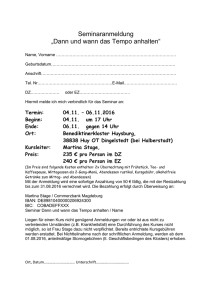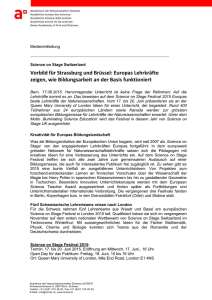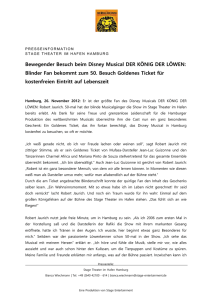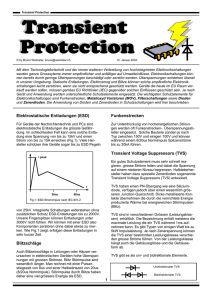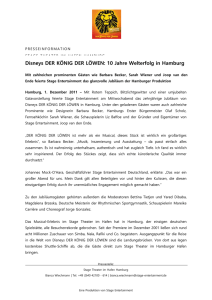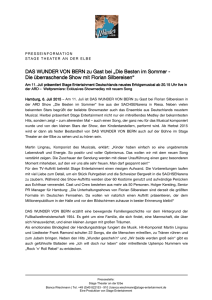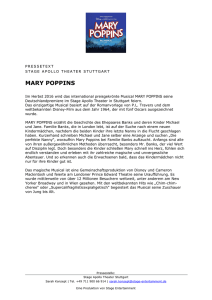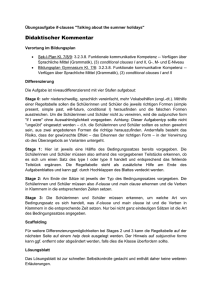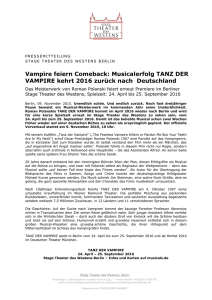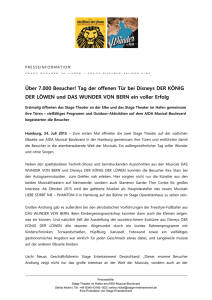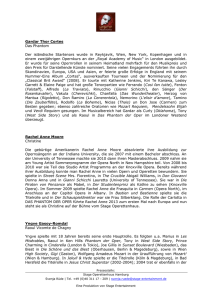Exercise in Pregnancy
Werbung
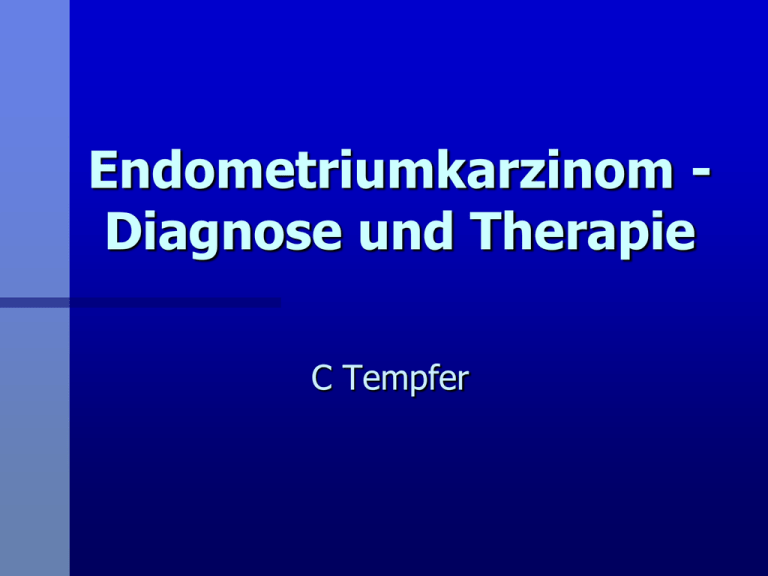
Endometriumkarzinom Diagnose und Therapie C Tempfer Allgemeines Häufigstes Malignom - Genitaltrakt 31 000 neue Fälle/5400 Todesfälle pro Jahr hohe Prävalenz – westl. Industriestaaten geringe Prävalenz - Entwicklungsländer, Südasien, Indien Östrogen-abhängig – ERT, BMI, Ernährung, anovulatorische Zyklen – Alter/Postmenopause, ger. Parität, hoher Sozialstatus PAP Test Kein Screening-Test für Endometriumkarzinom Sensitivität 50% (rp/k) – 50% aller Frauen mit EK zeigen abnormale Endometriumzellen im Abstrich Spezifität 25% (rp/pt) – 75% falsch positiv TVS – N. endometrii n=5013; • • TVS-Doppler N. endometrii stage I: 6 (Kurjak 1994) n=1000; TVS • 4mm cut-off; N. endometrii stage I: 1 (Karlsson 1996) n=1074; TVS+Doppler 4mm cut-off/PI; N. endometrii stage I: 3 (Vuento 1999) n=2025; TVS N. endometrii: 3 (Ciatto 1995) Summe: 9112/13; NNS 701 Screening Kein etabliertes Massenscreening – Kein adäquater Bluttest, kein Tumormarker – Keine ideale sampling-Methode Hochrisikopopulationen – Tamoxifen – Lynch II/HNPCC TVS und TAM Gerber 2000; n=247; 10mm cut-off; 5a; 1 asymptomatic cancer; 52 D&Cs; 4 perfor. Love 1999; n=487; 5mm cut-off; 0 cancers; 134 D&Cs Fung 2003; 9mm cut-off; 304 D&Cs - 6 cancers-all with bleeding 1/525 D&C HNPCC TVS – 2 Studien (Rijcken 2003; Dove 2002) n=41; 5 yrs; 17/179 TVS positive: 3 atyp. Hyperpl.; 1 Ca nicht entdeckt n=269; 3 yrs; 2 Endometrium-Ca; 0/2 durch TVS TVS + CA 125 - keine Daten TVS + endometrial sampling – 1 Studie (Renkonen 2006) n=175; 5 yrs; 11/14 entdeckt (8 durch Biopsie) + 14 atypische Hyperplasien; 0/4 N. ovarii entdeckt Empfehlung Empfehlung American Cancer Society, US Preventive Task Force – ‚…annual screening with endometrial biopsy beginning at age 35‘ Smith et al. ACS guidelines for the early detection of cancer, 2006. CA Cancer J Clin. 2006;56:11-25 Klinik Persist. perimenopausale Blutung Hämatometra/Pyometra in Postm. PMB – endometrial cancer: 15% of PMB specificity 15% – 90% of women with endometrial cancer sensitivity 90% (Hacker et al. 1986) Diagnose Histologie 1) Endometrium-Biopsie (Pipelle®, Kevorkian-Curette) 2) D&C 3) advanced stage disease – LAP/LSK Hysteroskopie – 65 Studien, n=26 346 (Clark et al. 2002) – Sensitivität 86.4% Spezifität 99.2% – 13.7% of cancers will be missed – post-test LR 0.15 not low enough to negate need for further testing – ERSETZT NICHT ABRASIO – zusätzlich zu Abrasio? - keine Daten Hysteroskopie Upstaging? Prognose? 10/113 (9%) pos. periton. Zytologie (Obermair et al. 2000) – FIGO IIIa n=262, Ia, Ib +/- HSK –assoziiert mit HSK (p=0.04), nicht Stadium, Grading, Histologie n=123; CO2 1.4% vs. saline 14%; p=0.0009 (Lo et al. 2002) 5-yr DFS, n=135+HSK; 127-HSK: 92.4% vs. 84.7% (p=0.5) (Obermair et al. 2000) Endometriumhyperplasie 2 unterschiedliche Entitäten – +/- Atypien (Kurman 1985) Risiko Progression 1.6% vs. 23% (Kurman 1985; n=170) Ansprechen auf MPA 94% vs. 50% (Ferenczy 1989; n=85) 1) Die meisten Frauen mit EMH ohne Atypien sprechen auf MPA an 2) Hysterektomie: Atypien, non-Responder MPA Endometriumhyperplasie Konkomitantes Karzinom – n=54; EMH+Atypien, HE Karzinom 19/54 (35%) – n=46; EMH+Atypien, HE (Hunter 1994) (Bilgin 2004) Karzinom 11/46 (24%) – n=289; EMH+Atypien, HE (Trimble 2006) Karzinom 123/289 (43%) Biologie Ausbreitungsrouten –Direkte Extension - häufigste –lymphatisch - pelvin/paraaortal –hämatogen - Lunge –Tube - Hysteroskopie Staging Surgically staged disease (FIGO 1988) replaced clinical staging system (1971) Unterschied? significant understaging (Tiitinen 1986) Staging (FIGO 1988) I - corpus Ia - endometrium; Ib/Ic - </>50% myometrium II - cervix III - extrauterine spread IIIa - serosa/adnexae/pos. washing, IIIb - vagina, IIIc -nodes IV - bladder or distant Verteilung nach Stadium Tumor Stage Number (n) I II III IV No Stage Total 5730 871 818 227 17 7663 Percent (%) 74.8 11.4 10.7 2.9 0.2 100.0 Pelvine Lymphknotenmetastasen Depth of Inv. Endometrium Inner Third Middle Third Outer Third Creasman et al. 1987 G1 (n=180) G2 (n=288) 0 3 0 2 (0%) (3%) (0%) (11%) 1 (3%) 7 (5%) 6 (9%) 11 (19%) G3 (n=153) 0 (0%) 5 (9%) 1 (4%) 22 (34%) Lnn-Metastasen - Tumorgrösse Depth of Inv. None <50% >50% Schink et al. 1987 <2cm (%) >2cm (%) Surf. (%) 0/17 (0) 0/27 (0) 2/9 (22) 0/8 (0) 5/41 (12) 6/23 (26) 0/0 (0) 2/9 (22) 4/8 (50) Paraaortale Lnn-Metastasen Depth of Inv. Endometrium Inner Third Middle Third Outer Third Creasman et al. 1987 G1 (n=180) G2 (n=288) 0 1 1 1 (0%) (1%) (5%) (6%) 1 5 0 8 (3%) (4%) (0%) (14%) G3 (n=153) 0 (0%) 2 (4%) 0 (0%) 15 (23%) Prognosefaktoren Alter – young women better prognosis (stage, grading) Histo 52/388 (13%) (Wilson 1990) adenosquamous, clear cell, USPC, undifferentiated 33% vs. 92% 5-yr OS Stadium, Grading, LVSI Spülzytologie+: 10.8%-22% (7 studies, n=1541) ER+, PR+ better prognosis (Palmer et al. 1988) DNA-Ploidie aneuploid worse prognosis Treatment Stage I Abdominal washing Total abdominal hysterectomy and bilateral oophorectomy (TAH-BSO) full pelvic lymphadenectomy >50% (Ic), poor histology, G3, G2>2cm, stage II paraaortic lymphadenectomy? G2/3 outer third invasion, grossly positive pelvic nodes or adnexae, palp. paraaortic nodes (GOG-study, Morrow 1991) Therapie I Adjuvant irradiation does not improve OS Adjuvant irradiation improves local control vault irrad. recurrences: 14%-1.7% (Lotocki 1983) pelvic irrad. G3, Ic, II, pN+ extended field irrad. G2/3+outer third, aN+, multiple pN+ whole adominal irrad. perit., oment. metast., +cytology? PORTEC n=715; Stadium I (G1 Ic, G2, G3 Ib) adjuvant pelvic irradiation vs. no therapy no lymphadenectomy; 46 Gray Lokalrezidive 4 vs. 14% (p<0.001) 5-YOS: 81 vs. 85% (p=n.s.) complications: 25 vs. 6% keine adjuvante Bestrahlung Prädiktiver Faktor: Alter >60yrs PORTEC G1 Ia,b.........................keine Irrad G1 Ic, G2 Ib..................Irrad >60 yrs G2 Ic, G3………….………..Irrad pelvic irradiation G1 Ia, Ib, G1 Ic <60 yrs, G2 Ib <60 yrs vaginal vault irradiation Therapie II Stage II: surgery, combined radiation/surgery, Wertheim-procedure Stage III: surgical removal of all macroscopic tumor Stage IV: combination surgery: local control - palliation, bowel; exenteration (sole bladder or rectum involvement) irradiation, progestins: 10% CR, 28% PR (Thigpen 1986; n=331) chemotherapy: Carbo/Taxol Prognose 5-Jahres Überleben Grade 1 2 3 Ia Ib 92.3 89.7 81.5 94.1 84.9 76.3 Stage (%) Ic IIa 83.2 79.8 68.3 86.1 71.8 65.9 IIb 72.7 71.1 49.0 Stage III-IV: 5-Year OS rates 0%-16% (Aalders 1984) Stage III ovary/tube only: 80% 5-Year OS (Bruckman 1980) UPSC/CCC/recurrent UPSC/CCC/recurrent Serös-papillär Prognosis, treatment 50% of all relapses caused by UPSC & CC subsequent breast cancer: 3.2% vs. 25% (Geisler et al. 2001) paclitaxel - III, IV, recurrent; n=20 (Ramondetta et al. 2001) –OR rate 77%; med. time to progess. 7.3 mos treat equivalent to ovarian cancer (Carbo/Taxol)
